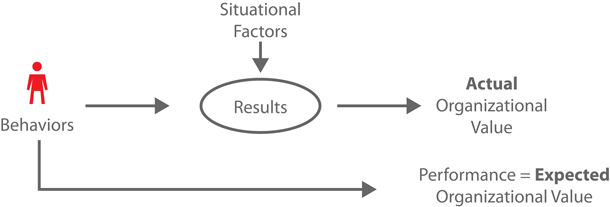As a leader in a business organization we are often required to assess the performance of team members. When a someone has not performed up to our expectations one or more factors may be at play. An easy response may be to believe that the individual is not up to the task, but it may also be a case where external, or situational factors are creating headwinds too large to overcome. Perhaps the team member is in a role that is not a good match for his or her knowledge and skills, or that the task is ill-defined.
I find the issue of external factors to be the most difficult to resolve. Let’s look at a few examples. Suppose you were Tim Cook, CEO of Apple, and had to deal with a broken map application in the new iOS release. The data for the application was purchased from several companies and apparently the way it was used or integrated caused some problems. In this case—to us—it seems pretty clear that outside factors were not part of the problem. The individual in charge of the application should have had control of the data, application development, and integration of the multiple data sets. However, suppose this individual was told that the application would be released no matter what shape it was in. Now that’s another story and would point to an external factor as a major contributor to the problem.
Let’s look at another issue, this time a more contentious one—that of the leadership of President Barack Obama during the severe financial downturn beginning in 2008 and continuing until the present day. In this case the opinions vary widely. Some individuals maintain that the President and his fiscal policies have prolonged the suffering and slowed the recovery, while others claim that he has done the best he can with the situation—that it is bigger than he and the Federal Reserve can easily fix. While some people want to replace the President in this election due to poor performance, others feel he couldn’t have done any better than he already has with these profound external factors and needs to remain in office.

Now I’d like to look at what the research says, beginning with the definitions.
- Behaviors are the actions, positive and negative, that people exhibit.
- Situational factors are forces not under the individual’s control which may positively or negatively impact the individual’s results.
- Results are the states or conditions which changed because of the individual’s behaviors and that were helped or hindered by situational factors.
- Organizational value is the worth associated with results or individual behaviors.
- Performance is the expected value an organization would receive from an individual’s behavior.
Take the example of a salesman for an auto parts supplier who I’ll call Walter. In 2007 about 16 million automobiles were sold in the US. Walter calls on all the US auto manufacturers and beats his quota month after month. Based on results we would consider him to be a high performer. Fast forward two years to 2009. Less than 11 million cars are sold in the year. Walter doesn’t hit quota one month—his sales are down considerably. Based on his results we could argue that Walter’s performance has taken a nose dive.
In this case, though, it’s quite easy to see the moderating effect of the situational factors. Of course it’s not usually so easy to see and that’s when you get to earn your paycheck.
Using our model of job performance let’s turn back to President Obama. Some would argue that his behaviors have been poor and therefore his job performance is poor. Others will argue that his behaviors have been on the mark but that the situational constraints are so significant that what we have is the best one could expect. I won’t jump into that fray, though.
To truly assess your team member’s performance stay in touch with their activities and ask what tasks they are working on and the processes they are using. Observe their interactions with others to determine how they are helping or hindering team performance. Do they seem to have the knowledge they need to perform their job, and if not do they seek input from others? Are they able to utilize their knowledge and skills to create value? Do they show commitment to the tasks at hand? Ask about external factors and their effect on the output they are generating.
Your ability to assess a team member’s performance and utilize them in the most effective manner can have a huge impact on your overall team performance. If you remain diligent and committed to this effort you will reap significant rewards.
Concepts:
- Results are a function of individual behaviors and situational, or external factors
- Job performance is a function of individual behaviors
- External factors can radically enhance or hinder an individual’s results
Keywords: leadership, job performance, job evaluation, appraisal, situational factors, situational constraints, behaviors
References:
- Kirchgaessner, S. (2012, August 31). Obama braced for battle on economy. Financial Times. Retrieved from http://www.ft.com/intl/cms/s/0/e22e1a5e-f377-11e1-9ca6-00144feabdc0.html#axzz28A6OHDz9
- Motowidlo, S. J. (2003). Job performance. In I. B. Weiner, W. C. Borman, D. R. Ilgen, & R. J. Klimoski (Eds.), Handbook of Psychology, Volume 12, Industrial and Organizational Psychology (pp. 39–53). Hoboken, New Jersey: John Wiley & Sons, Inc.
- Sanger, D. E., Herszenhorn, D. M., & Vlasic, B. (2012, December 19). Bush aids Detroit, but hard choices wait for Obama. New York Times. Retrieved from http://www.nytimes.com/2008/12/20/business/20auto.html

